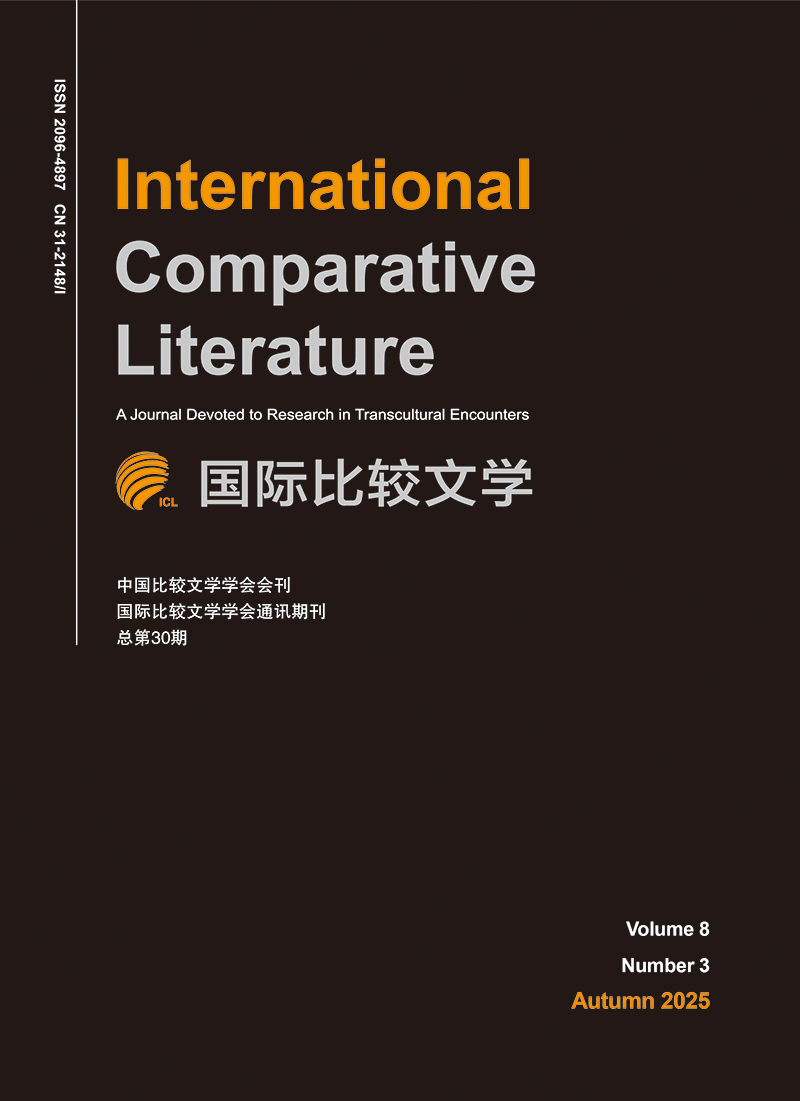Magic,Milarepa and Nirvana: Iris Murdoch’s Rewriting of Tibetan Buddhism in The Sea,the Sea
-
摘要: 艾丽斯·默多克一生对藏传佛教持有浓厚的兴趣,布克奖小说《大海,大海》浓缩了作家关于藏传佛教的认识与思考。小说中有大量藏传佛教元素,主人公詹姆斯是一位藏传佛教徒,在小说中多次运作法术,并以藏传噶举派尊者之名讳米拉日巴给一位夏尔巴人向导取名,最后,詹姆斯以一种近似“涅槃”的方式神秘辞世。这留下了一系列关于藏传佛教的未尽讨论。首先,为什么詹姆斯的藏传佛教法术经常失败?其次,詹姆斯为什么给夏尔巴人取名米拉日巴?詹姆斯乃至小说与这位藏传噶举派尊者之间存着什么样的关系?最后,默多克以一种神秘的方式让詹姆斯退场,那么,詹姆斯到底死了吗?本文围绕《大海,大海》中“法术”“米拉日巴”和“涅槃”等藏传佛教主题,再现作家关于藏传佛教意象的创作灵感来源,以及如何对这些象征展开了微妙而深刻的改写。一方面是对藏传佛教概念的借用,法术审视背后“权力”的诱惑,以“幻人”诠释“臆想”概念;另一方面是默多克道德哲学与藏传佛教教义的分歧,包括“善”与宗教式的“厌离心”之“苦行主义”的区别,以及“涅槃”与“空虚”的不同。上述改写不仅反映了默多克对藏传佛教乃至西藏的态度,改写的动机更折射出作家的道德与哲学关切。Abstract: Iris Murdoch holds lifelong interest in Tibetan Buddhism, which has been elaborated and explored in the author’s Booker Prize-winning novel the Sea, The Sea. The novel is replete with elements of Tibetan Buddhism, particularly when the protagonist James Arrowby, a Tibetan Buddhist, frequently performs magic spells and names a Sherpa guide Milarepa after the revered figure of the Kagyu school. Ultimately, James departs in a manner reminiscent of “nirvana,” leaving behind a series of unresolved discussions about Tibetan Buddhism: First off, why James, the Tibetan Buddhist practitioner, failed in most of his magical practices? Next, why James named sherpa the guide after Milarepa, the esteemed saint from Kagyu clan of Tibetan Buddhism? Furthermore, as James made his exit in a mystical manner, the final question is whether James was really dead or not. The article rivets on “magic,” “Milarepa” and “nirvana,” three key Tibetan Buddhist symbols in the fiction, tracks the origins from where Murdoch has obtained such inspirations, and eventually, to re-demonstrate how Murdoch subtly rewrites aforementioned symbols. Unveiling rewritings and untold motivations, the study not only reveals Murdoch’s attitudes upon Tibetan Buddhism and Tibet, but also her moral-philosophical stance. This paper explores the themes of “magic,” “Milarepa,” and “nirvana” in The Sea, the Sea, re-envisioning the sources underlying the author’s creative inspiration regarding Tibetan Buddhism and how she subtly and insightfully reinterprets these symbols. On one hand, Murdoch’s rewriting involves borrowing concepts from Tibetan Buddhism, such as the allure of “power” underpinning the act of “magic” and interpreting the concept of “fantasy” through the figure of “tulpa.” On the other hand, the rewriting process highlights the divergence between Murdoch’s moral philosophy and Tibetan Buddhist doctrines, including the distinction between “goodness” and religious “asceticism,” as well as the difference between “nirvana” and “void.” Not only do these rewrites reflect Murdoch’s attitude towards Tibetan Buddhism and Tibet, but they also evince the author’s moral and philosophical concerns through the motives behind her rewrites.
-
Key words:
- Iris Murdoch /
- Tibetan Buddhism /
- The Sea,the Sea /
- rewriting
-
[1] . 当增吉《真实,让我走近你——解读〈米拉日巴传〉》,《西藏研究》,2005 年第 2 期,第 72 页。 [2] . 方立天《佛教哲学》,中国人民大学出版社,2012 年,第 82 页。 [3] . 何伟文《艾丽丝·默多克小说研究》,上海外语教育出版社,2012 年,第 63 页。 [4] . 何伟文《"基督佛教徒"或者"佛教基督徒"——论默多克小说〈海,海〉中佛教的价值》, 《国外文学》,2011 年第 1 期,第 65-75 页。 [5] . 李四龙《欧美佛教学术史》,北京大学出版社,2009 年,第 21 页。 [6] . 艾丽斯·默多克,《大海,大海》,梁永安译,上海译文出版社,2021 年。 [7] . 桑杰坚赞《米拉日巴传》,刘立千译,民族出版社,2000 年。 [8] . 沈卫荣《想象西藏:跨文化视野中的和尚、活佛、喇嘛和密教》,北京师范大学出版社, 2015 年,第 5 页。 [9] . 岳剑锋《西方文论关键词:空虚》,《外国文学》2022 年第 2 期,第 107-109 页。 [10] . John Blofeld,The Way of Power:A Practical Guide to the Tantric Mysticism of Tibet, London:George Allen & Unwin Ltd,1970. [11] . Peter J. Conradi,Going Buddhist:Panic and Emptiness,the Buddha and Me. London: Short Books,2004. [12] . Peter J. Conradi,Iris Murdoch:A Life. London:HarperCollins,2001a. [13] . Peter J. Conradi,The Saint and the Artist. London:HarperCollins,2001b. [14] . Bryan Cuevas,The Hidden History of The Tibetan Book of the Dead,Oxford:Oxford UP, 2003. [15] . Alexandra David-Néel,Magic and Mystery in Tibet,New York:Dover Publication,1971. [16] . Lama Kazi Dawa-Samdup,The Tibetan Book of the Dead,edited by W. Y. Evans-Wentz, Oxford:Oxford UP,2000. [17] . Elizabeth Dipple,Iris Murdoch:Work for the Spirit. London:Methuen,1982. [18] . Nora Hämäläinen,"Which Void?",in Nora Hämäläinen and Gillian Dooley eds.,Reading Metaphysics as a Guide to Morals,Cham:Palgrave Macmillan,2019,pp. 261-276. [19] . Donald S. Lopez,Jr.,Prisoners of Shangri-La:Tibetan Buddhism and the West,Chicago: U of Chicago P,2018. [20] . Iris Murdoch,"Journal 14:January 1981-August 1992",Iris Murdoch Archive,Kingston University,London,KUAS202/1/13,p. 25. [21] . Iris Murdoch,The Sea,the Sea,London:Vintage,2009. [22] . Iris Murdoch and Christopher Bigsby,"Interview with Iris Murdoch,1982",in Gillian Dooley,ed.,From a Tiny Corner in the House of Fiction,Columbia:U of South Carolina P,2003,pp. 97-119. [23] . Iris Murdoch,"Knowing the Void",in Peter J. Conradi,ed.,Existentialists and Mystics, London:Chatto and Windus,1997:pp. 157-160,p. 158. [24] . Iris Murdoch,"The Sovereignty of Good over Other Concepts",in Peter J. Conradi,ed., Existentialists and Mystics,London:Chatto and Windus,1997:pp. 363-385. [25] . Iris Murdoch,Metaphysics as a Guide to Morals,New York:Penguin Books,1992. [26] . Tom Neuhaus,Tibet in the Western Imagination. Cham:Palgrave Macmillan,2012. [27] . Lawrence Normand,"Shangri-La and Buddhism in James Hilton's Lost Horizon and W. H. Auden and Christopher Isherwood's The Ascent of F6",in Lawrence Normand and Alison Winch,eds., Encountering Buddhism in Twentieth-Century British and American Literature,London: Bloombury T&T Clark,2013,pp. 37-52. [28] . Rubin Rabinovitz,Iris Murdoch,New York:Columbia UP,1968. [29] . Suguna Ramanathan,Iris Murdoch:Figures of Good,Cham:Palgrave Macmillan,1990. [30] . Anne Rowe,Iris Murdoch,Liverpool:Liverpool UP,2019. [31] . Lindsay Tucker,"Released from Bands Iris Murdoch's Two Prosperos in The Sea,the Sea",in Lindsay Tucker,ed.,Critical Essays on Iris Murdoch,New York:G. K. Hall, 1992,pp. 161-175. -

 点击查看大图
点击查看大图
计量
- 文章访问数: 34
- HTML全文浏览量: 4
- PDF下载量: 3
- 被引次数: 0



 下载:
下载:

